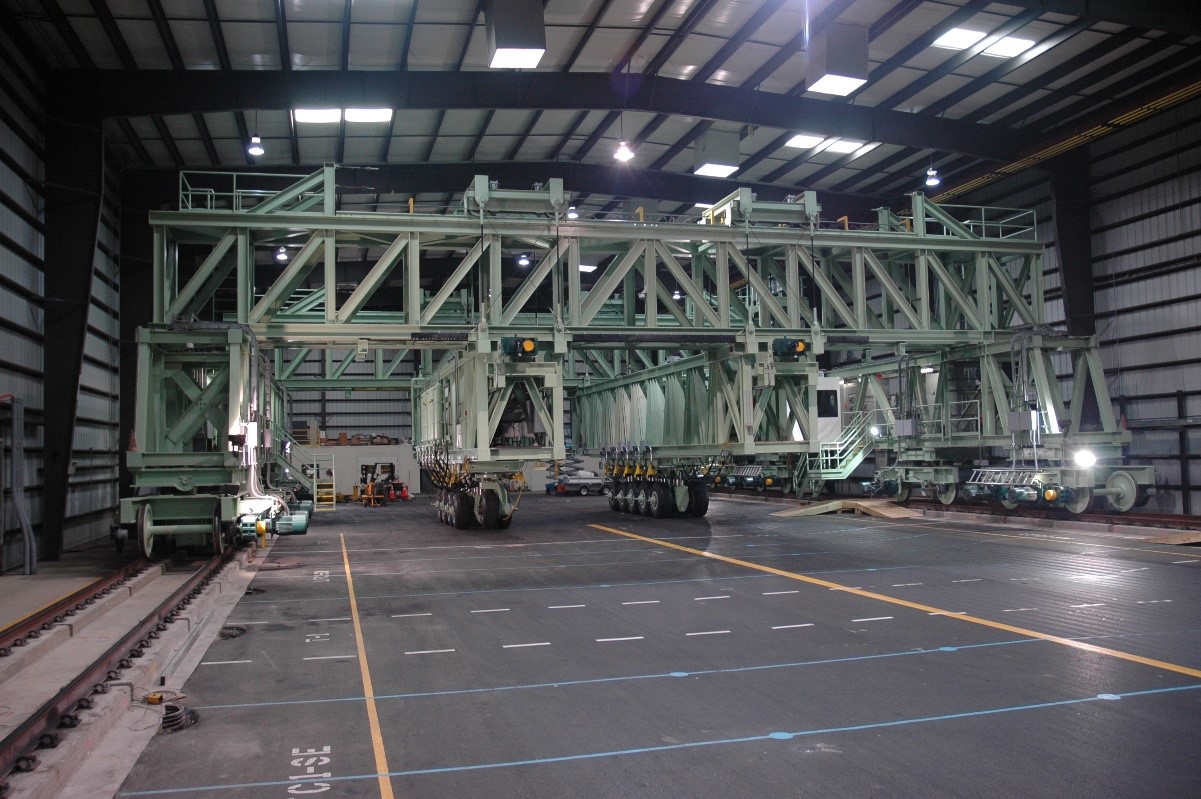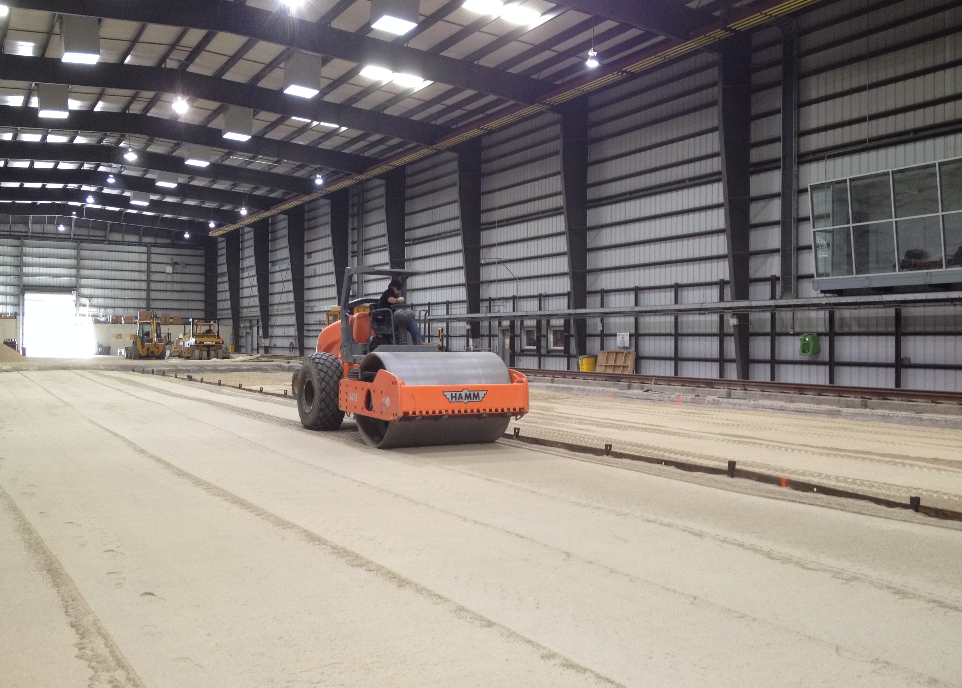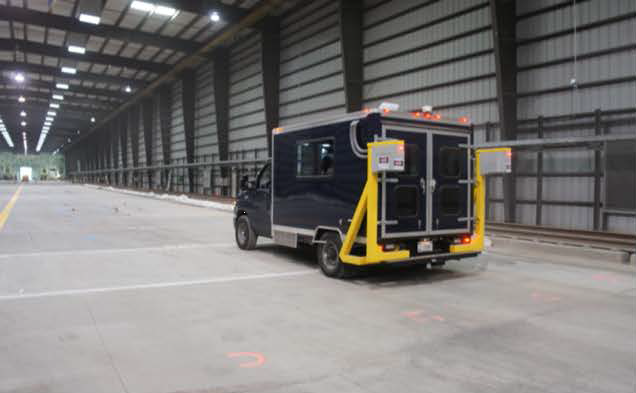National Airport Pavement Test Facility (NAPTF)

To support the ATR, the FAA operates a state-of-art, full-scale pavement test facility at the William J. Hughes Technical Center near Atlantic City, NJ. The National Airport Pavement Test Facility (NAPTF) provides a controlled enclosed test bed 900 feet long and 60 feet wide where full-scale airport pavement sections are constructed from the subbase up through the finished surface. The test track can be divided into independent test items of a variety of pavement structures to conduct multiple research projects simultaneously. The test items are subjected to simulated aircraft traffic using the National Airport Pavement Test Vehicle (NAPTV). This 1.3 million pound rail-based test vehicle applies simulated aircraft loads with multiple landing gear configurations to induce an accelerated life cycle until failure occurs. Throughout this trafficking cycle, the sensors in the fully instrumented test bed collect both static and dynamic data. The static sensors monitor temperature, moisture, and crack status (resistance) on an hourly basis while the dynamic sensors monitor strain and pavement deflection during NAPTV operations.

NAPTF Test Section Under Construction (Click to Zoom)
In addition to the in-place sensor data collection, the NAPTF research projects are supported by periodic data collection using the FAA’s suite of NDT technologies. A variety of applications can be met using systems operated both by hand and mounted on the FAA NDT van. With testing conducted throughout trafficking operations, the effect of the simulated aircraft loads on the structural and functional pavement characteristics of the test items can be monitored. Typical uses of some of the NDT technologies employed for each research project are detailed below:
- Heavy Weight Deflectometer (HWD) – Monitor the strength of the pavement system through evaluation of pavement layer moduli.
- Portable Seismic Property Analyzer (PSPA) – Monitor the strength of the surface pavement layer through evaluation of the seismic modulus of the top pavement layer.
- Macrotexture – Monitor the friction characteristics of the pavement through the surface texture.
- 2D/3D Imaging – Monitor surface characteristics and groove conditions of the pavement with 2D imagery of the test sections with associated 3D data.
- Profilers – Determine the extent of rutting and upheaval of the pavement through monitoring profile changes during trafficking.
- Ground Penetrating Radar (GPR) – Monitor changes in thickness of the pavement due to trafficking using both air-coupled and ground-coupled systems.
For more information on the NAPTF and NAPTV, following the links to the detailed FAA webpages.
NAPTF
NAPTV

FAA NDT Van Conducting 2D/3D Imaging on NAPTF Test Item (Click to Zoom)
Return to Showcase Research Projects Overview